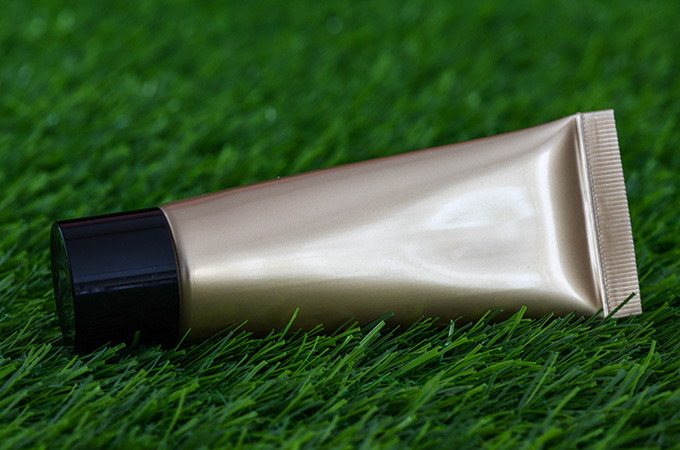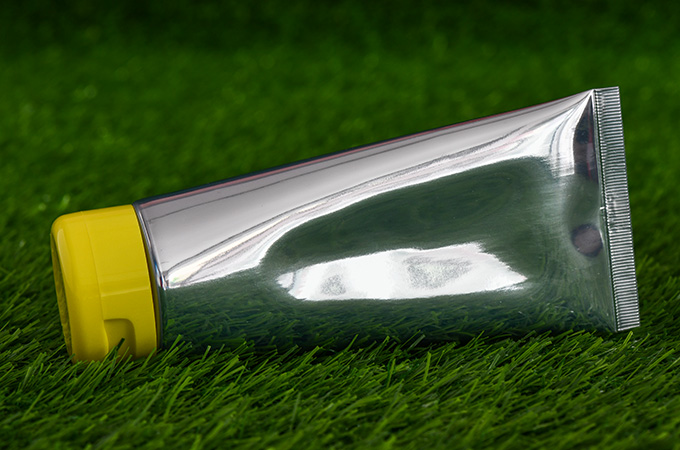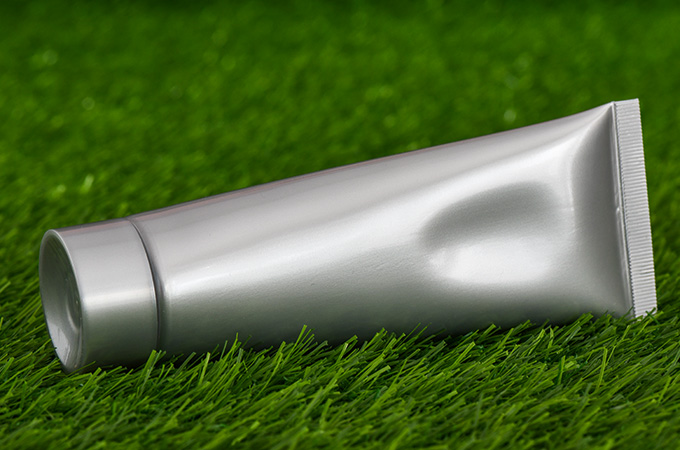


Society has realized the urgent need to shift from a linear to a circular economy to achieve a more sustainable way of life and make a significant contribution to climate protection.
The Green Deal and Circular Economy Action Plan of the EU Commission are aiming at increasing recycling and therefore reducing the use of virgin materials. All packaging on the EU market shall be recyclable or reusable by 2030 in order to achieve the best possible level of waste prevention and resource efficiency.
Besides a consistent design for recycling, consumers’ willingness to separate their household waste and an efficient infrastructure for the collection, sorting and recycling of materials is required in order to achieve high-quality recycling.
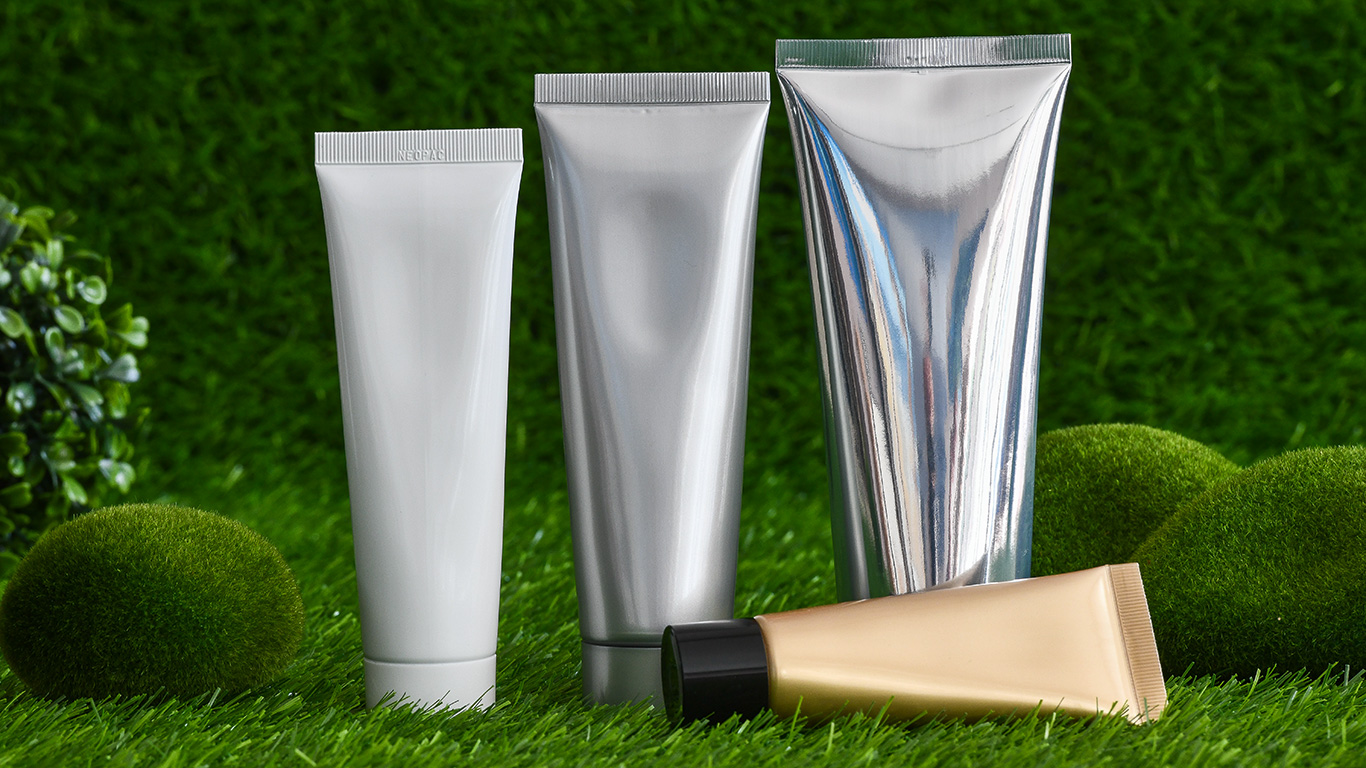
Tubes have to be designed in a way that they are fit for recycling. In this context all players in the tube value chain, including tube manufacturers, closure, coating and printing ink producers as well as customers must take into account the recyclability of the packaging when designing a tube. This will make sure that the valuable materials which are used for the production of the tube stay in the material loop.
Several extended producer responsibilty (EPR) systems in Europe and other non-governmental and governmental organisations have produced design for recycling guidelines or standards for assessing the recyclability of packaging. These documents give concrete recommendations and, in some cases, also include positive and negative lists of packaging components which facilitate or hamper the recycling of packaging.
In some European countries such standards serve to oblige EPR systems to calculate their system participation fees in such a way that financial incentives are given to promote the use of materials and material combinations that allow for the highest possible percentage to be recycled, taking into account the practice of sorting and recovery.
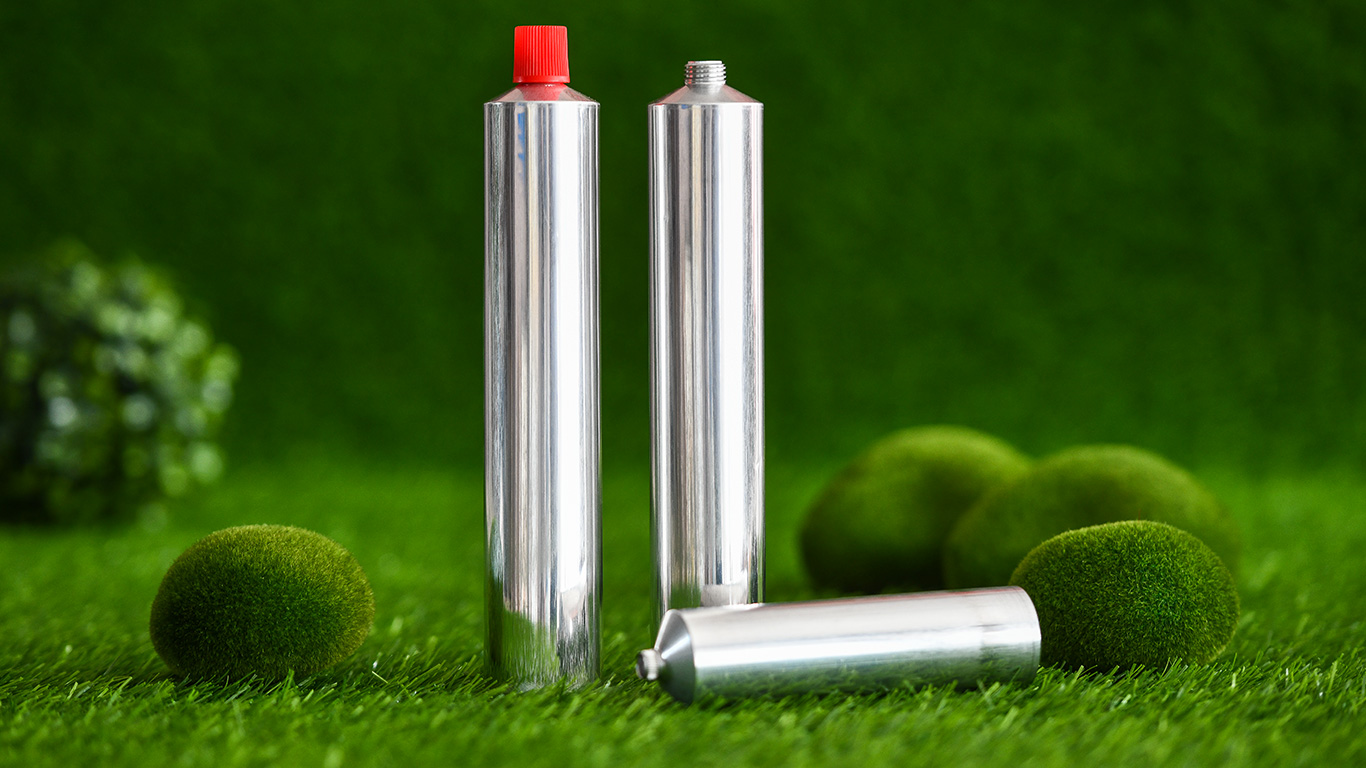
It all starts with the consumer and an appropriate collection infrastructure. If the consumer does not care for packaging and only considers it as waste, the game is already lost in the first place. Therefore, consumers need to be educated throughout Europe, for example by means of campaigns of extended producer responsibility (EPR) systems, that packaging such as tubes are valuable materials which shall be properly sorted at home and placed in the correct bin so that they can be collected at the curbside and are available for recycling.
It is the final consumer who plays a key role in achieving the utmost quantity and quality possible of collected used packaging so that it is available for high quality sorting and recycling.
Apart from building an appropriate collection infrastructure and raising consumer awareness through education campaigns, a harmonised labeling on packaging across Europe could provide relevant and consistent information to consumers on how to properly dispose of both the products and their packaging. The European Packaging and Packaging Waste Directive would be the right framework to set common requirements on which information should be provided to consumers and how this should be done.
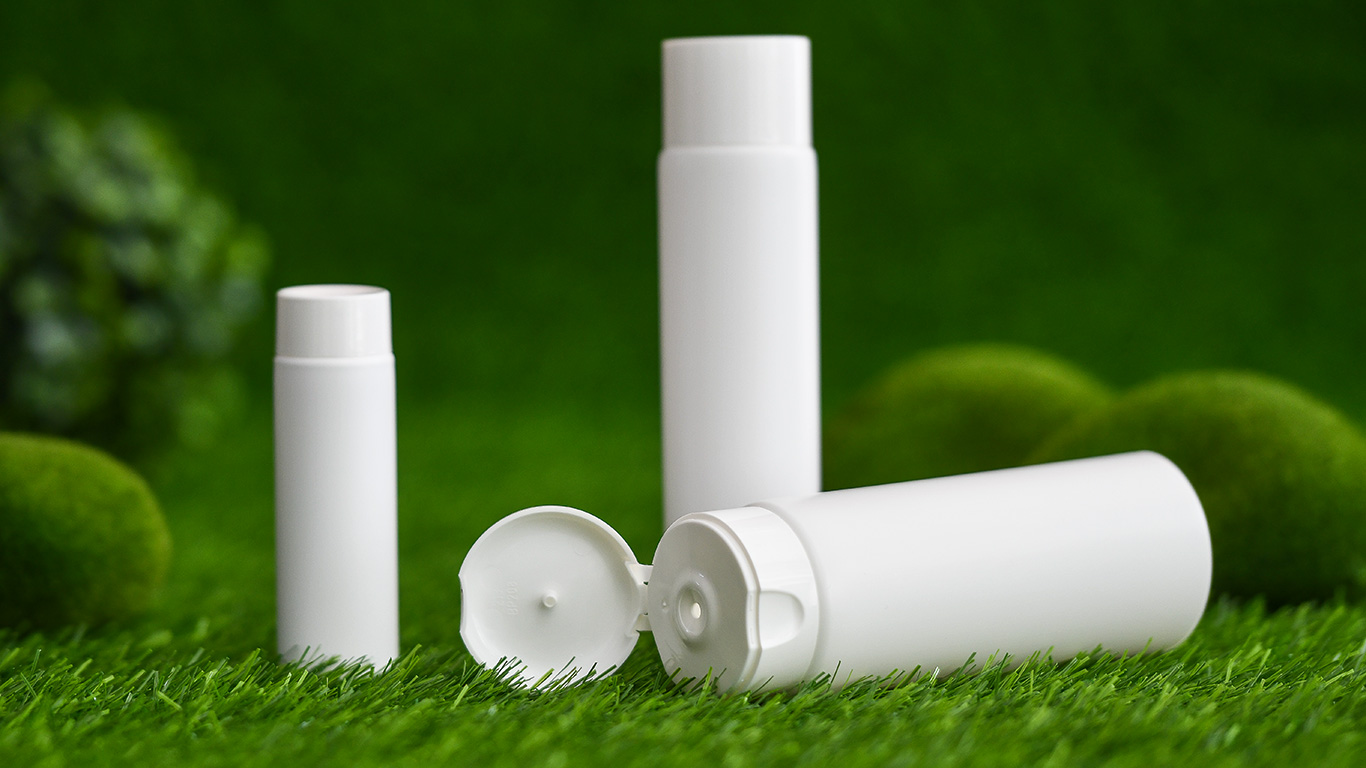
After the collection of packaging, sorting of the collected quantities kicks in. A lot of progress has been made in this sector thanks to the development of sophisticated sorting technologies.
Aluminium tubes can be sorted from the packaging waste stream with so-called Eddy Current systems. The Eddy Current separator is applied to a sorting plant’s conveyor belt carrying the mixed packaging waste. At the end of the conveyor belt there is an Eddy Current rotor which uses a powerful magnetic field to separate non-ferrous metals from the rest of the packaging waste. Non-ferrous metals are thrown forward from the belt into a separate bin, while non-metals simply fall off the belt due to gravity.
Plastic tubes of different materials such as PE or PP can be sorted with the help of Near Infrared (NIR) technology which identifies the different plastic materials to achieve clean material fractions. This technology uses infrared light to analyse the packaging at high speeds, detecting and ultimately separating the different polymers.
One of the latest initiatives to improve the sorting of used packaging is the digital watermarks initiative HolyGrail 2.0. This pilot project is aiming at proving the viability of digital watermarking technologies for accurate sorting and consequently high-quality recycling. Digital watermarks are imperceptible codes, the size of a postage stamp, covering the surface of a consumer goods packaging and carrying a wide range of attributes. The aim is that once the packaging has entered into a packaging waste sorting facility, the digital watermark can be detected and decoded by a standard high-resolution camera on the sorting line, which then – based on the transferred attributes (e.g. food vs. non-food) – is able to sort the packaging in corresponding streams. This would result in better and more accurate sorting streams and finally in high-quality recyclates benefiting the complete packaging value chain.
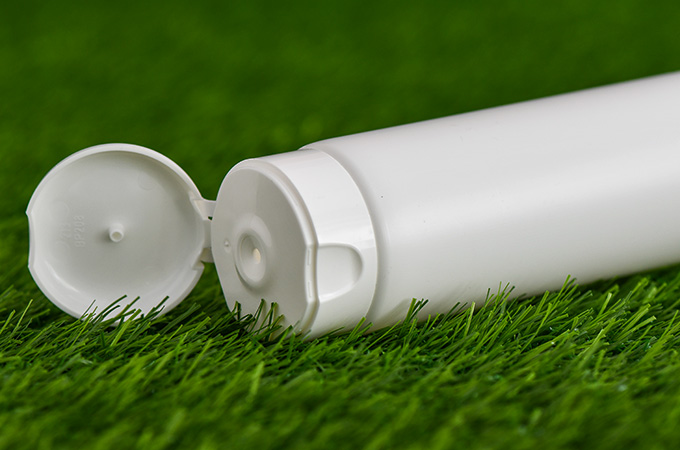
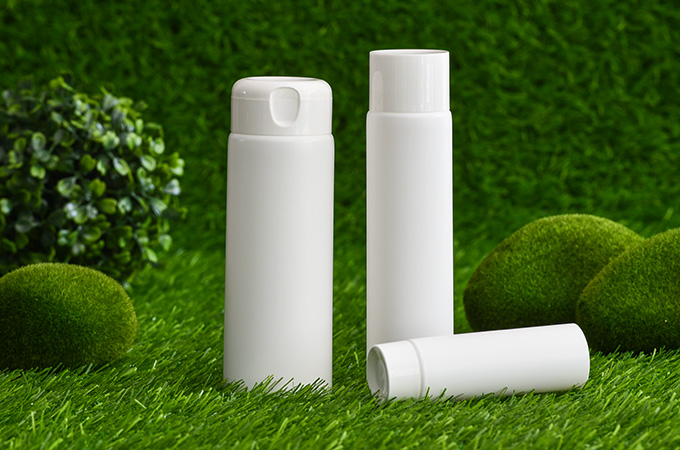
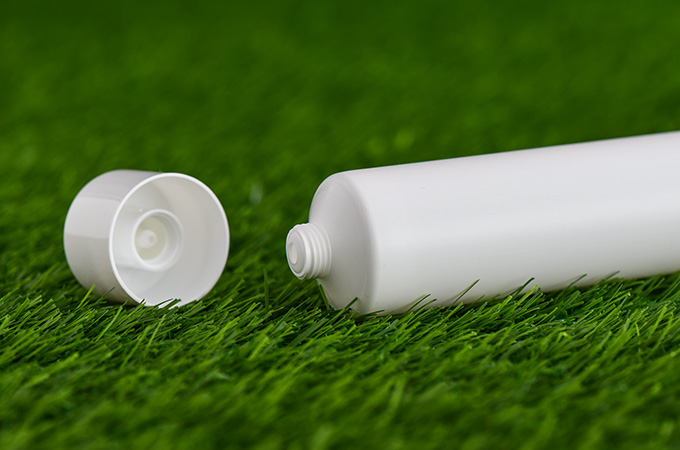
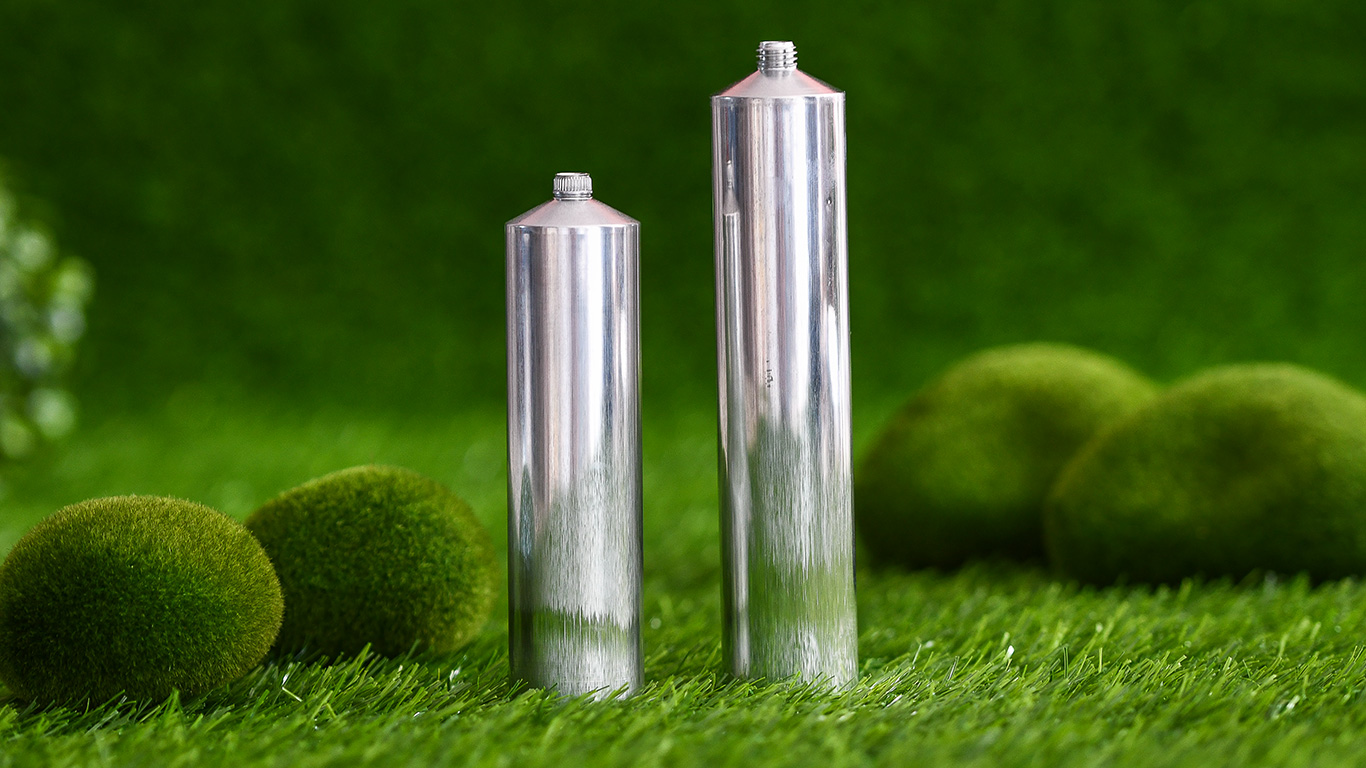
The European Packaging and Packaging Waste Directive (PPWD) lays down ambitious material recycling rates for packaging which must be achieved by industry in Europe. In order to live up to these recycling rates, investments in sophisticated recycling technologies are needed throughout Europe.
Today, aluminium tubes are mostly recycled with the help of the pyrolysis technology. Pyrolysis is a process in which organic substances, such as lacquers, printing inks or residual contents, that are adhering to the aluminium tube are separated from the aluminium in a so-called pyrolysis drum in the absence of oxygen. Energy is released in the form of heat during the low-temperature carbonization. This heats the drum in a continuous process. Aluminium packaging maintains its shape after pyrolysis and can be melted down to aluminium or processed.
TPE and PP tubes are mechanically recycled together with other PE or PP packaging. In the recycling process, the sorted PE and PP fractions are shredded in several stages and foreign components are removed in various washing and separation procedures. A primary process in the mechanical preparation of plastics for recycling is separation in the swim-sink tank. This separates undesirable materials of different densities.
More complex laminate structures such as aluminium-barrier or plastic-barrier laminate tubes are often used to meet with specific product or customer requirements. Thanks to innovative technologies, it is even possible to recycle these complex laminate structures.
In those cases in which recycling of complex composite packaging is not possible, the energy incorporated in flexible packaging can be recovered through waste-to-energy incineration processes which produce electricity and heat. If, for example, an incinerated laminate tube contains an aluminium foil layer, only part of the aluminium is oxidized into energy. The remaining aluminium melts and can be recovered from the incinerator “bottom ashes” with the help of Eddy Current technology.
In general, an openness to new recycling technologies is essential, if higher recycling rates shall be achieved in future. In this context, chemical recycling of plastic packaging is controversially discussed. In this process polymers are chemically broken down to monomers. These monomers can be used to produce new polymers and plastics, either by reproducing the original or developing new types of polymeric products. This technology might be an interesting option – especially for more complex plastic packaging structures which cannot be mechanically recycled – to achieve the even more ambitious recycling quotas for plastic packaging in future.

Tubes not only have to be designed in a way that they are fit for recycling. They also need to be fit for purpose so that they can achieve maximum resource efficiency. Thus, besides the recyclability of the tube, also minimum material input must be ensured which at the same time provides maximum product protection. Technical advances in the flexible tubes industry have allowed to reduce the wall thicknesses of tubes. In this context, any downgauging of materials must not compromise on product protection or lead to other functional shortcomings. A lopsided focus on packaging reduction might entail the risk of under-packaging with potential collateral damages such as product waste or spoilage.
The mastering of this challenge is crucial because if the product is spoilt and thrown away by the consumer, all resources used for the production of the product are lost. In almost all cases these resources are far more significant than the resources used for the production of the packaging so that the overall carbon footprint is ruined.
In some cases, with regard to resource efficiency there might also be a conflict between the minimization of material input – for example through the use of laminate structures – and the recyclability of packaging. On the one hand, recyclability might more easily be reached with less complex packaging. On the other hand, it might be linked to more material input to achieve the same packaging functionality. In this context, clear and consistent rules are needed concerning the prioritization of aims in the future packaging policy so that the actors in the packaging supply chain are able to adapt their strategies.
Concerning resource efficiency also other aspects come into play: With the exception of the pharma sector and some cosmetic products, stand-up tubes have rendered most secondary packaging superfluous in many end-use markets.
Finally, tubes weigh very little, are unbreakable, and can be transported easily in a space-saving manner. This saves resources and energy. The resealability of the tube coupled with the fact that it can be emptied completely contributes to products having a long storage life and helps consumers use valuable ingredients and resources responsibly.
